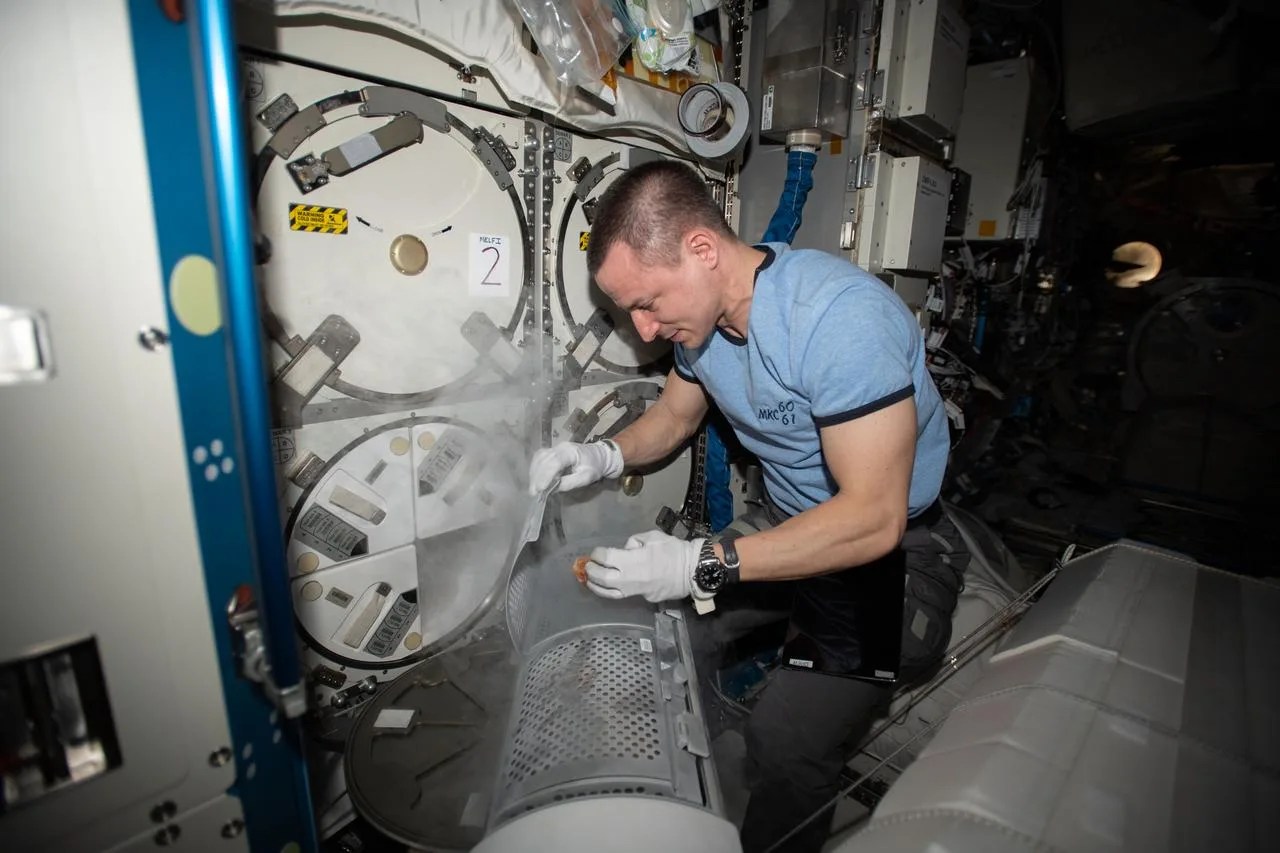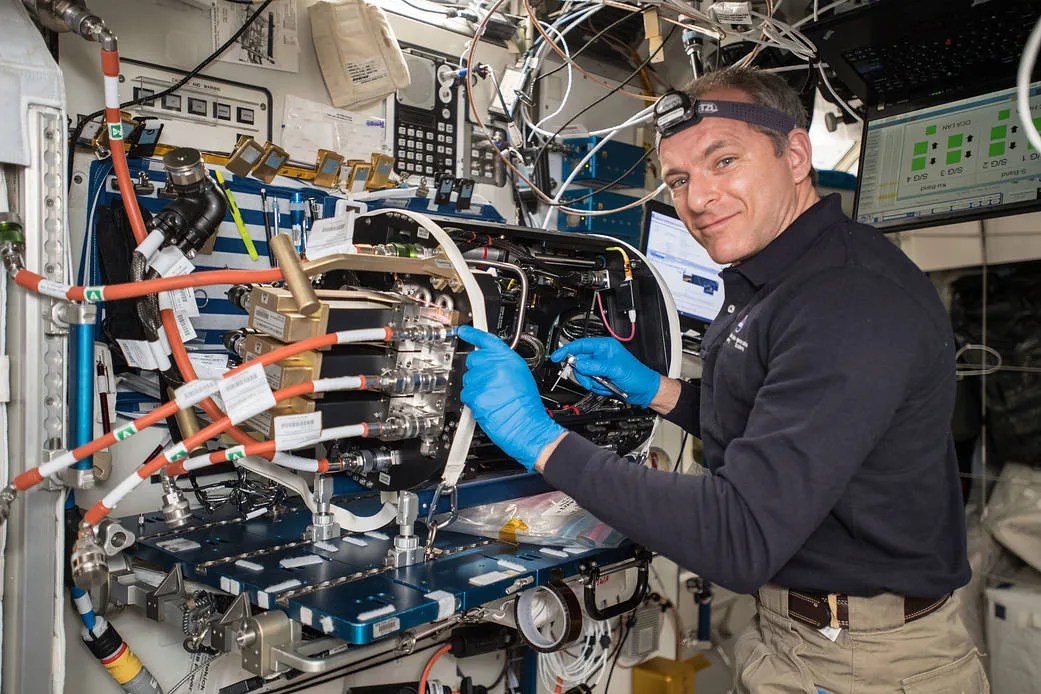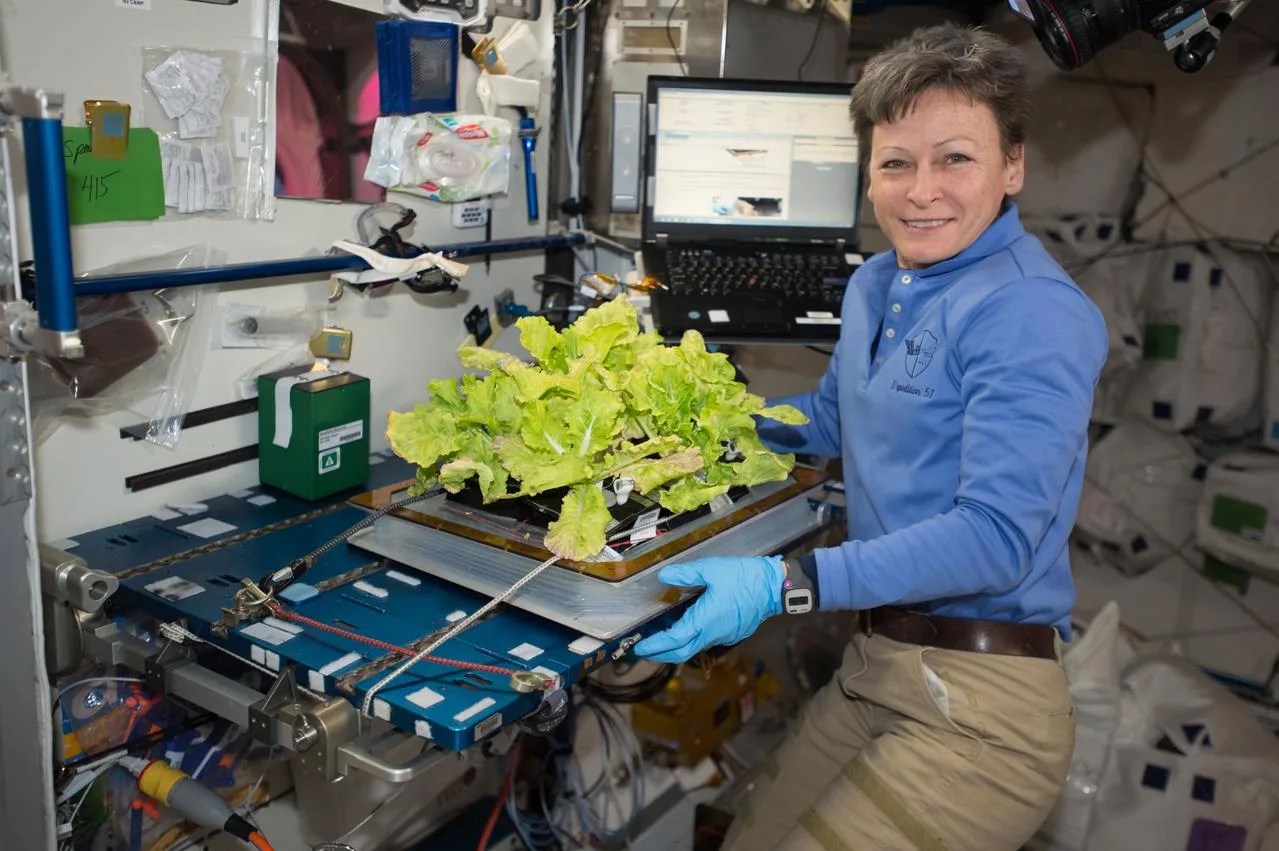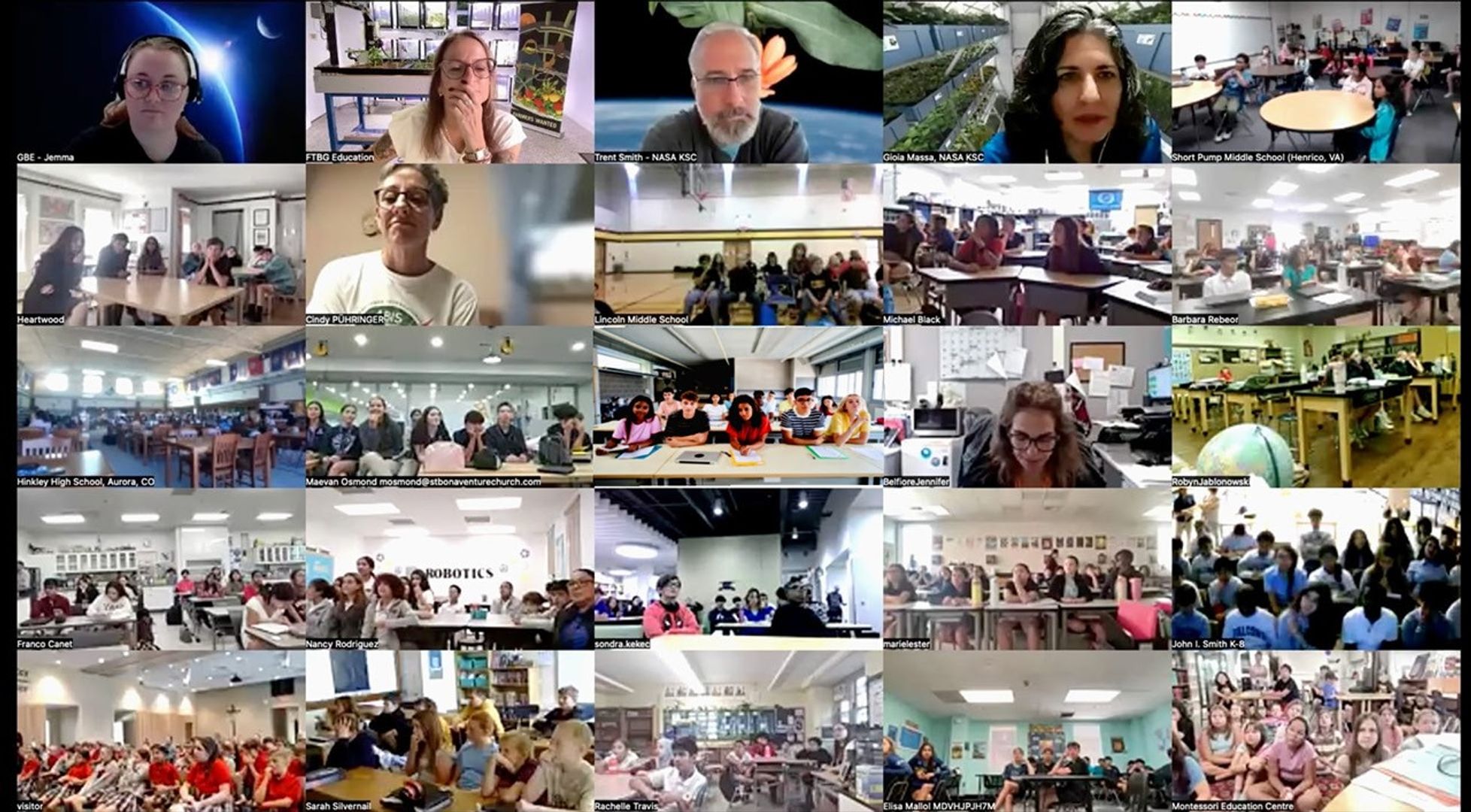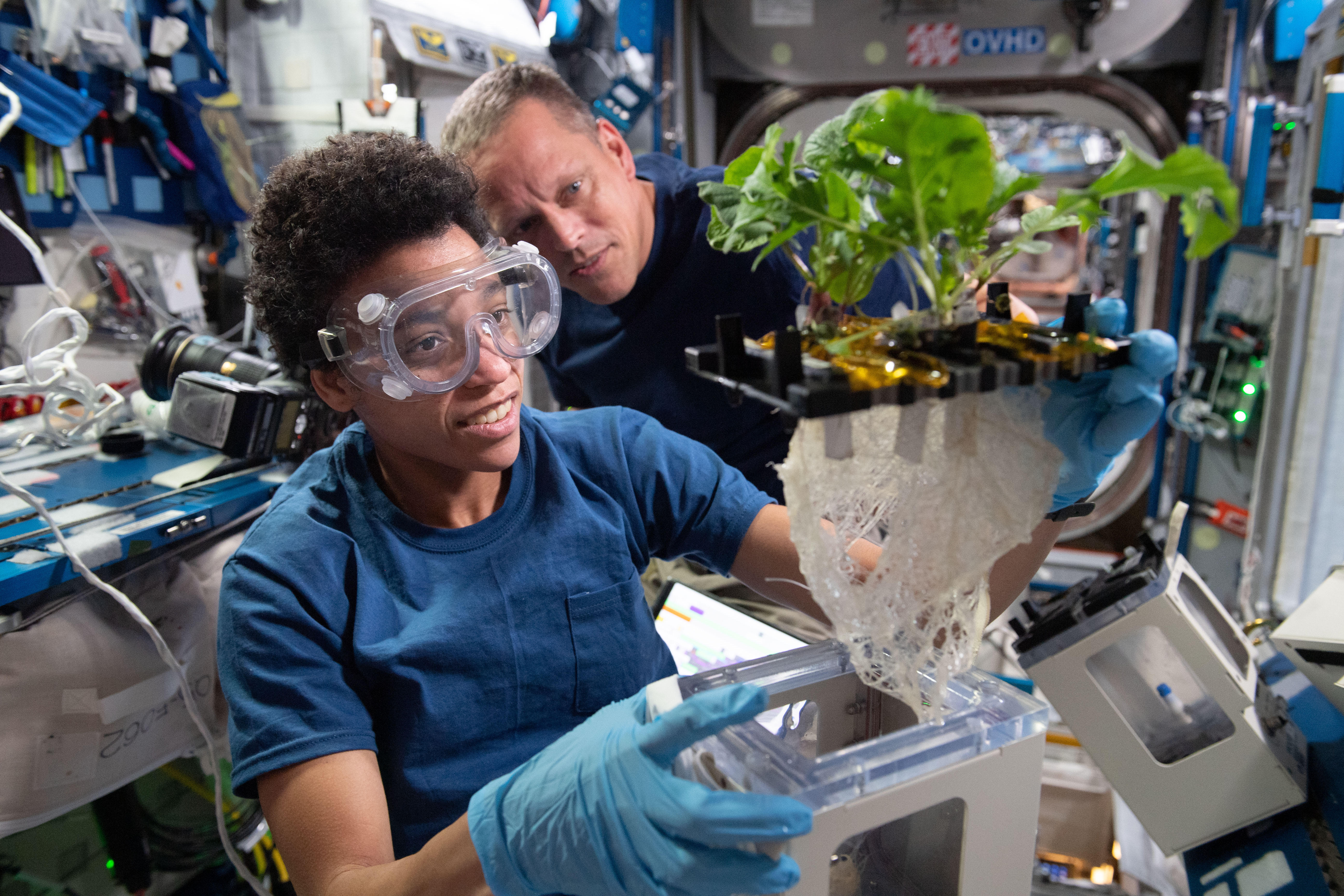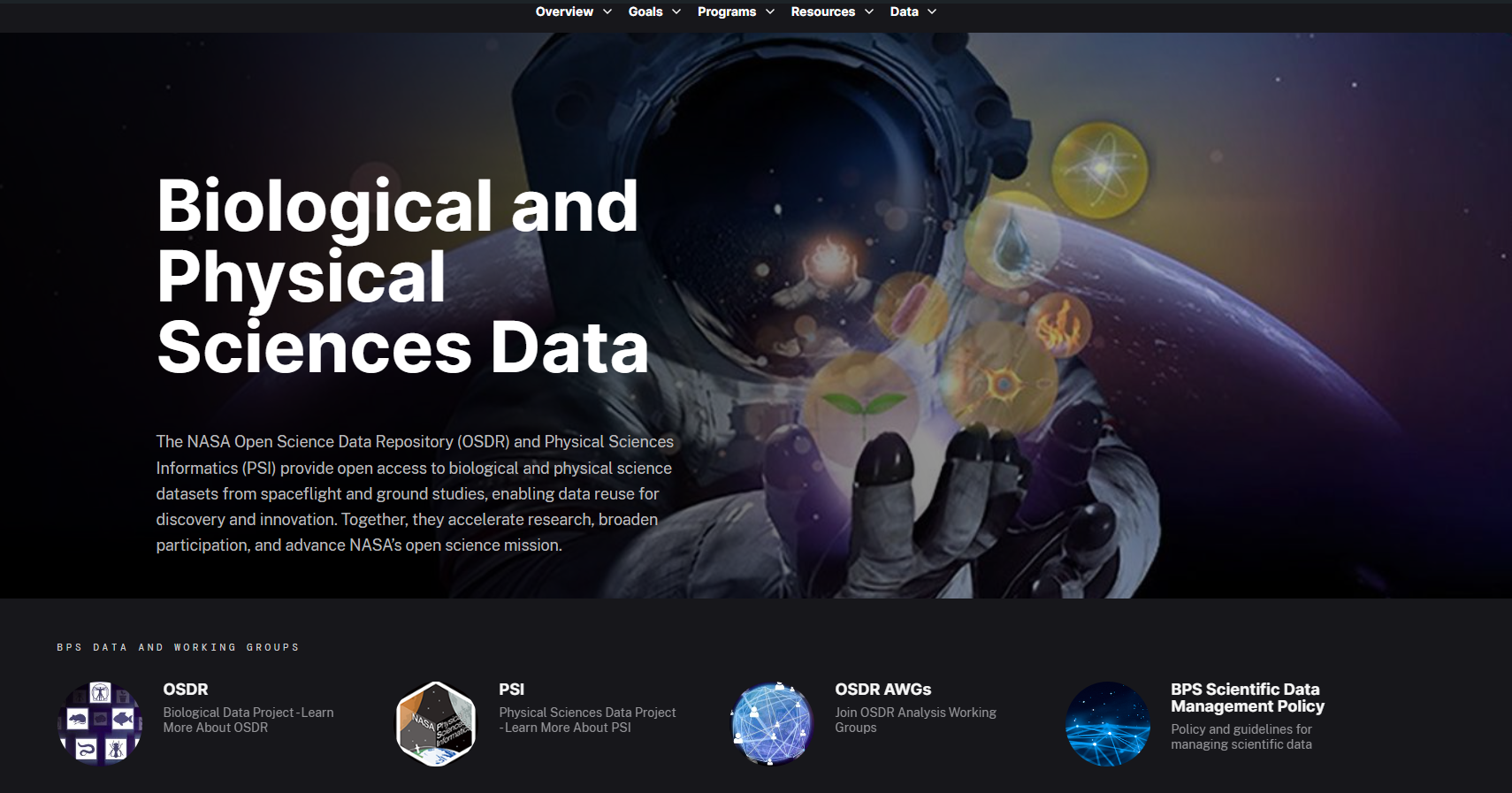NASA’s division for Biological and Physical Sciences (BPS) research in space just found a new home on Earth.
From plunging the temperature of atoms to advance technologies like your cell phone, to growing food in space to help humans reach new destinations, BPS has a hand in an enormous range of cutting-edge space research. As a new division of NASA’s Science Mission Directorate (SMD), BPS now rubs elbows with NASA missions pushing the frontiers of knowledge that includes spacecraft and telescopes exploring our planet and our solar system and peering beyond.
BPS’s move from NASA’s Human Exploration Organization Directorate to SMD in July 2020 integrates the agency’s scientific work in these areas and advances practical applications toward future missions. Formerly known as the Space Life and Physical Sciences Research and Applications (SLPSRA) Division, the newly created BPS Division will continue to serve its mission of pioneering scientific discovery and enabling human spaceflight exploration.
“As experimentalists, we use aspects of the spaceflight environment to study biological and physical systems,” said Craig Kundrot, BPS director. “Studying how these systems respond to gravity and radiation, among other factors, can lead to scientific discoveries that might one day help enable prolonged space exploration and eventually benefit life on Earth.”
BPS research uses the extreme conditions of space -- such as weightlessness and high doses of radiation — to study a wide spectrum of systems. The variety of the Space Biology program’s studies, for instance, range from growing plants on the International Space Station to examining how the station’s microbiomes change over time. The Physical Sciences program supports cutting edge research like cooling atoms to ultracold temperatures or researching ways to improve fuel efficiency and reduce pollution.
The division’s role in these endeavors are multifold: offering funding opportunities, providing researchers with access to a variety of “stepping-stone” experimentation platforms that lead to spaceflight experiments, providing programmatic and technological support, and sharing findings with the scientific community at large. “With our next Decadal Survey around the corner and the engagement of our research community,” Kundrot said, “we look forward to continuing to pioneer new discoveries that will help shape the work of future generations of scientists.”
“Discoveries in one discipline can inform others and generate entirely new questions,” said Thomas Zurbuchen, associate administrator for the Science Mission Directorate. “Science and human exploration are working hand in hand as never before, and we welcome our biological and physical sciences colleagues to the team. Adding new perspective to our work will further our shared scientific understanding of the universe and safeguard and improve life on Earth and in space.”
 Thomas ZurbuchenAssociate AdministratorScience Mission DirectorateNASA |  Craig KundrotDivision DirectorBiological and Physical SciencesNASA |
BPS Research in Action: A Sampling of Current Studies
Whether you know it or not, quantum science touches our lives each day. Quantum mechanics refers to the branch of physics that focuses on the behaviors of atoms and subatomic particles, and it is a foundational part of many components in many modern technologies, including cell phones and computers, that employ the wave nature of electrons in silicon.
One example of quantum research supported by BPS is the Cold Atom Lab (CAL), the world’s first multi-user facility for the study of ultra-cold atoms in space. A “mini-lab” in space, CAL gives researchers a suite of tools to cool, tune and probe ultra-cold atoms. In low gravity, cold atom clouds essentially “free float” inside a high vacuum chamber. Under these conditions it is possible to reach lower temperatures and to create experiments not possible on Earth.
As atoms get colder, they move more slowly and become effectively larger. Ultracold atom facilities like CAL cool atoms down below a billionth of a degree above absolute zero, the temperature at which they would theoretically almost stop moving entirely. At these low temperatures, the atoms can form unique quantum states of matter.
Development of quantum science and technology is still at the discovery stage. Physicists are just beginning to build practical quantum computers, and experiments with the quantum properties of matter have only been possible at all because of research technologies developed in the last 20 years.
NASA is currently partnering with outstanding physicists from around the world to advance quantum science through space-based research. This research could enable new opportunities on a ten-year horizon, possibly including: the development of quantum processors which may enable limited computing applications; new sensors for biotechnology and defense; next-generation positioning, navigation, and timing systems for military and commercial applications; new approaches to understanding materials, chemistry, and even gravity through quantum information theory; novel algorithms for machine learning and optimization; and transformative cyber security systems including quantum-resistant cryptography in response to developments in quantum information science.
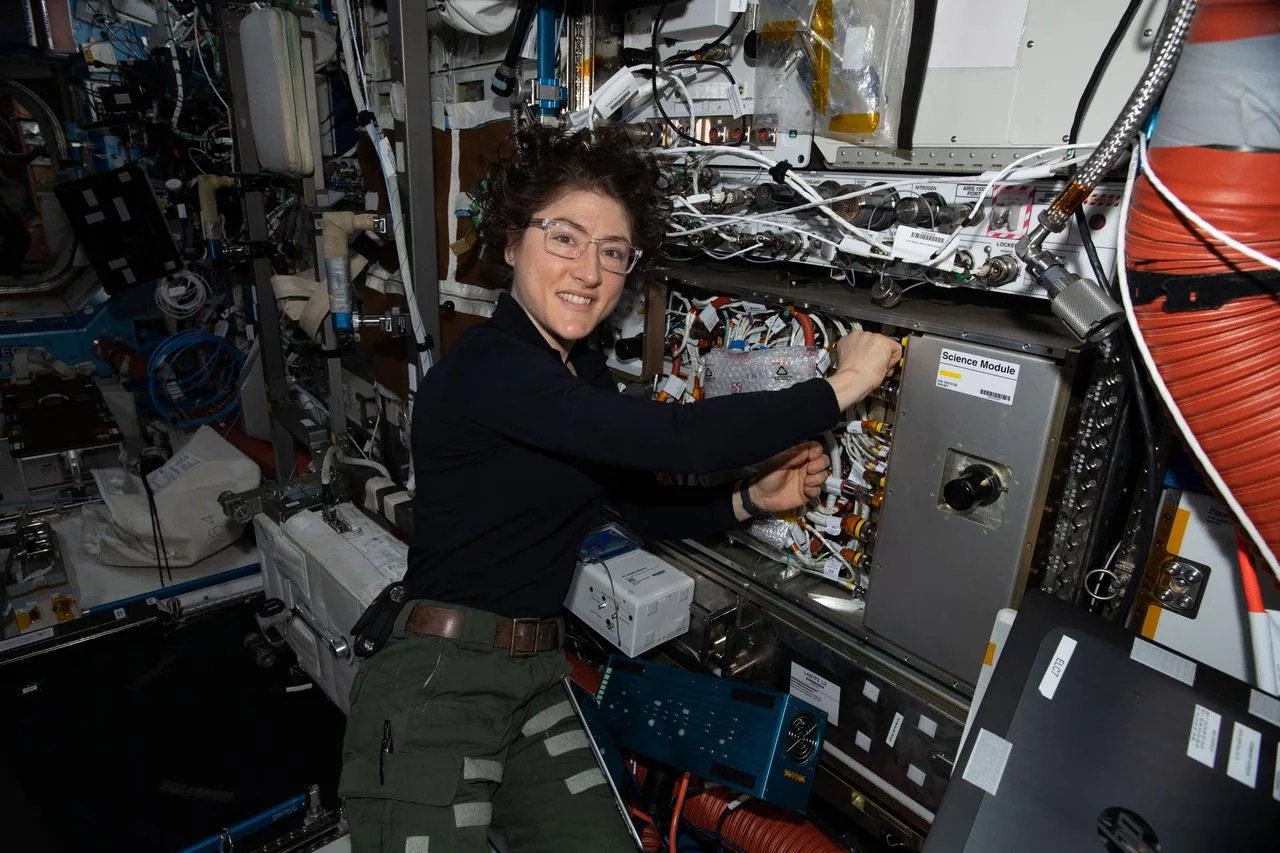
Studying Microbiomes on the International Space Station
The effects of the spaceflight environment on viral and microbial pathogen dynamics are largely unknown and represent both a significant gap in our knowledge and an important opportunity to study the presence of microbial populations and predict health risks during long-term space exploration.
BPS’s space biology research advances knowledge of microbial communities of a built, closed-system environment and how this environment interacts with the astronauts. A three-year study involving four U.S. and international crew volunteers is currently underway in which scientists are studying how the microbial ecosystem changes over time. Eight different surface locations are sampled on the Station, including the dining table, waste and hygiene compartment, crew quarters, and others. By studying how the microbiome changes over time, researchers will be better prepared to put systems in place that ensure the health and safety of our astronauts as they embark on prolonged missions in space.
BPS’s Space Biology program is sponsoring two other investigations that will conduct deeper analyses of the microbiology of the built environment and microbial interaction dynamics and additional investigations will be selected through future competitive solicitations. These studies of ISS microbial ecosystems lay the foundation for considering how to manage microbial ecosystems as human exploration advances to the Gateway, lunar surface and eventually Mars.
Improving Fuel Efficiency While Reducing Pollution
The Advanced Combustion via Microgravity Experiments (ACME) project is a set of five independent studies using the Space Station to research improved fuel efficiency and reduced pollutant production in practical combustion on Earth, through innovative research focused on materials flammability.
One such ACME experiments, the Burning Rate Emulator (BRE) experiment, is focused on fire prevention, especially in spacecraft. Specifically, BRE’s objective is to improve our fundamental understanding of materials flammability, such as ignition and extinction behavior, and assess the relevance of existing flammability test methods for low and partial-gravity environments. It is hoped that this technique could be used to predict flammability without conducting the test in low gravity.
After completion of this series of experiments on gaseous fuels (which followed an earlier series of experiments on liquid fuels), a series of experiments examining solid fuels will provide critical data for fire safety in human exploration and validate material flammability numerical models.
Growing Plants in Space
The Vegetable Production System, known as Veggie, is a space garden residing on the space station. Veggie helps NASA study plant growth in microgravity while adding fresh food to the astronauts’ diet, which can enhance happiness and well-being on the orbiting laboratory.
The most current study, Veg-04A, focuses on the impact of light quality and fertilizer on leafy crop growth for a 28-day grow-out, microbial food safety, nutritional value, taste acceptability by the crew, and the overall behavioral health benefits of having plants and fresh food in space.
Mizuna mustard, a leafy green crop, was grown for 28 days under two different light quality treatments in space, and the impact on crop growth was analyzed in terms of the differences observed in plant yield, nutritional composition and microbial levels. One goal in these experiments is to grow leafy greens with high harvest index—meaning, most of the plant is edible.
What’s next for Veggie? Researchers will be testing the suitability of other plants, especially leafy greens, for crew consumption, and Advanced Plant Habitat (APH) will be growing radish and investigating underlying mechanisms of how plants grow differently in space.
BPS Research Facilities and Platforms
BPS research and technology development is conducted on a wide range of experimental platforms including the International Space Station, ground-based analogs for spaceflight, drop towers and aircraft that provide seconds of weightlessness, to free-flyer satellites.
BPS includes personnel are located at NASA facilities across the country, including NASA headquarters, Ames Research Center, Glenn Research Center, Marshall Space Flight Center, Jet Propulsion Laboratory, Johnson Space Center, and Kennedy Space Center.
Learn more about Biological and Physical Sciences research
Read the latest BPS news
Visit the Science Mission Directorate site

























